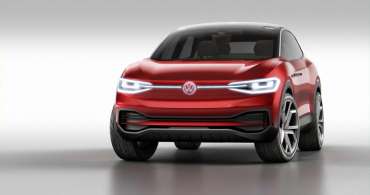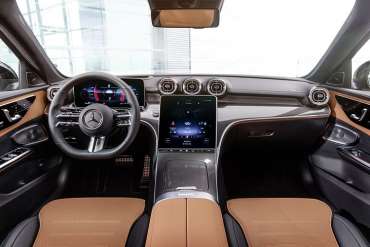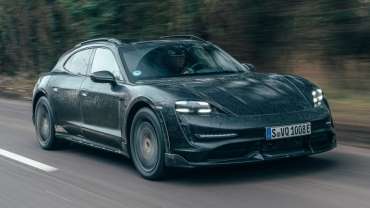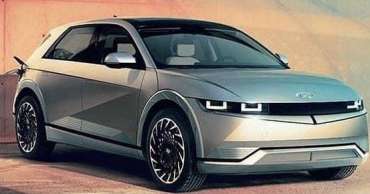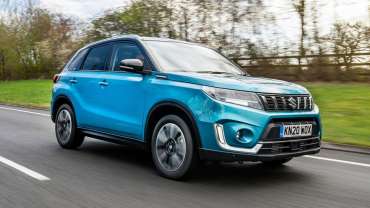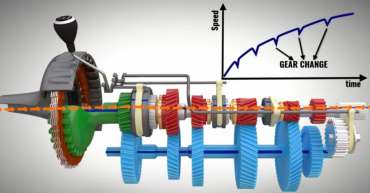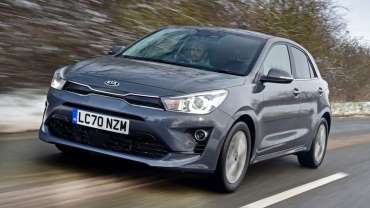
Worldcarblog.com
Volkswagen started producing another electric SUV: ID.5
Production of the first pre-series copies of ID.5 has begun, while the start of production of models intended for the market is expected in the second half of the year. The new model should be reminiscent of the ID.Crozz concept, and it is certainly a coupe version of the already known Volkswagen electric SUV - ID.4.
The German car giant Volkswagen continues with the offensive on the electric car market, so it has already started the production of the third electric model based on the MEB platform, reports zimo.dnevnik.hr.
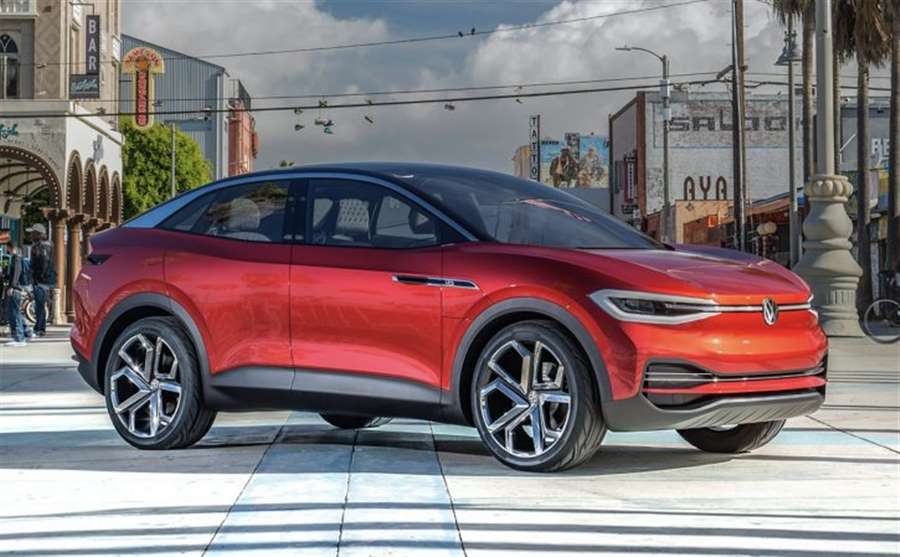
Sales of the ID.3 model (which should play the role of an electric Golf on the market) began last year, followed by the compact ID.4 SUV. Several other models are in preparation, such as the family ID.6, whose photos were recently leaked in China, and which you can see here, and ID.2 is mentioned. However, the first comes next - ID.5, an attractive SUV in the form of a coupe.
As ID.5 is not yet official, there is no data on its performance, but according to rumors, this will be a coupe version of the ID.4 model, which should look like the ID Crozz concept.
Although it has not been officially presented yet, the German company confirmed that the production of pre-series models has already started, while the production of the final versions is expected in the second half of the year.
Interestingly, like the ID.3 model, the "five" will not be intended for the United States, but the primary market will be European.
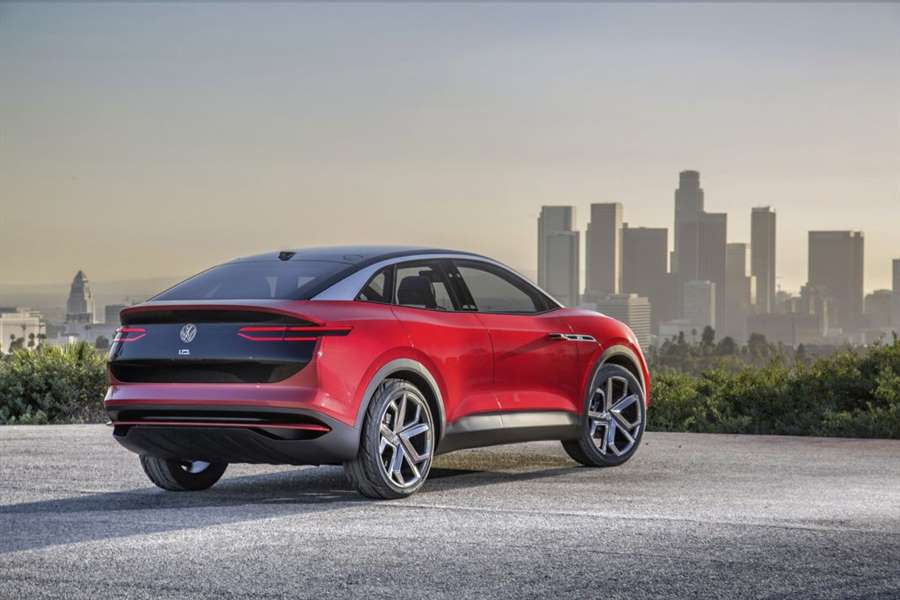
In terms of options and performance, it is speculated that the figures will be similar to those on the ID.4 model. Thus, the 150 kW engine that drives the rear wheels is mentioned (versions with two engines and all-wheel drive will appear later), as well as the 77 kWh battery.
Given that the start of production is expected in the second half of 2021, it is clear that Volkswagen will not wait too long until the official presentation of this model.
Pictures of the concept on which ID.5 is supposedly based indicate that this may be the most attractive electric "Volkswagen" which, if the price is not too high, could really achieve great market success, and perhaps be a bestseller in the e-SUV class. German companies.
New Mercedes-Benz C-Class. He steals technology from the S-Class
Here is the bitterly sweet premiere of Mercedes. One of the most important models on offer has officially said goodbye to big engines. 4 electrified cylinders are the maximum you can count on in the new C-Class. Apart from the engine, it is a really interesting car that in many respects strives for higher market segments.
After 7 years of market presence, we are officially saying goodbye to the fourth generation Mercedes C-Class - the last available with 8 and 6-cylinder engines. Fans of "real" motoring have reason to complain. However, this does not mean that the new C-Class is not a worthy successor to its predecessors. The car promises to be great, especially in terms of equipment and technical solutions.
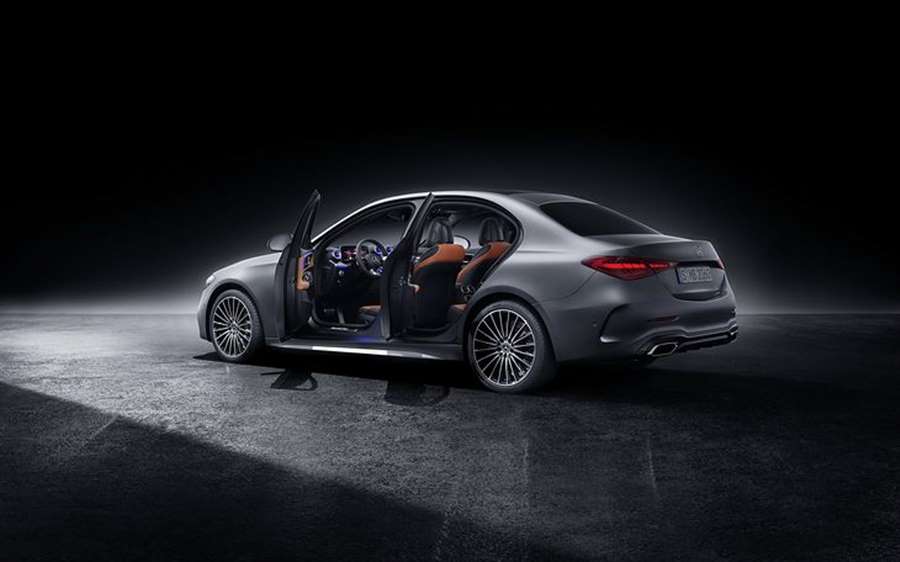
inspired by older siblings…
Looking at the photos, it’s not hard to see a resemblance to the premium S-Class. The new C-Class, although smaller by as much as two segments, is reminiscent of a leading sedan. Moreover, it is not a small car - as usual, the new generation has become bigger than its predecessor.
It is 4,751 mm long, 1,820 mm wide and 1,438 mm high, which is 65 mm longer, 10 mm wider and 9 mm lower. The wheelbase has also increased significantly - from 2,840 to 2,865 mm, which will surely flow into the cabin space. The trunk, however, remained practically the same dimensions - 450 liters in the sedan and 490 liters in the station wagon.
Mercedes boasts that all this has been achieved without compromising the proportions and aerodynamics of the body. The C-Class still boasts an impressive drag coefficient of Cd 0.24 for the sedan and Cd 0.27 for the station wagon.
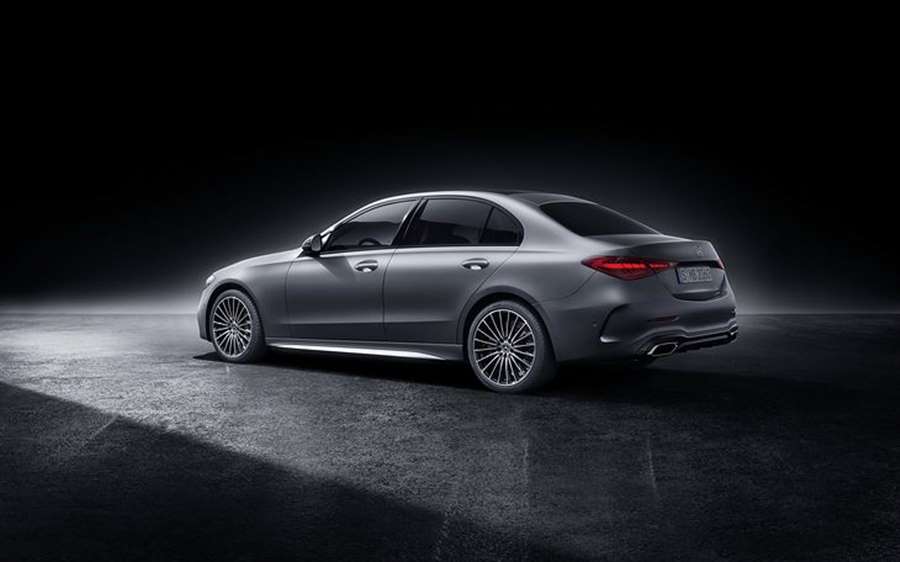
The cockpit will probably come as no surprise to those already familiar with Mercedes ’modern philosophy. Almost all services are based on large screens, which are also reminiscent of those in the S-Class. However, they are somewhat smaller. The one in front of the driver has a standard diagonal of 10.25 inches (and optionally 12.3). In turn, the central, vertically positioned measures “only” 9.5 inches with the possibility of replacing 11.5 inches.
Of course, there is the latest version of the MBUX system with voice control and many intelligent functions that support the driver and passengers while traveling. Constant connection to the Internet will provide not only contact with the world and access to current information, but also, for example, streaming services, including the original music collection provided by the manufacturer. Remote software updates will also be standard.
Manageability without sacrificing comfort
The system known from the aforementioned S-Class debuts in the new C-Class, although in a slightly simplified version it will certainly prove useful. We are talking about swivel rear wheels, which can change their position by 2.5 degrees if necessary, improving handling at low speeds and increasing rear stability at high speeds.
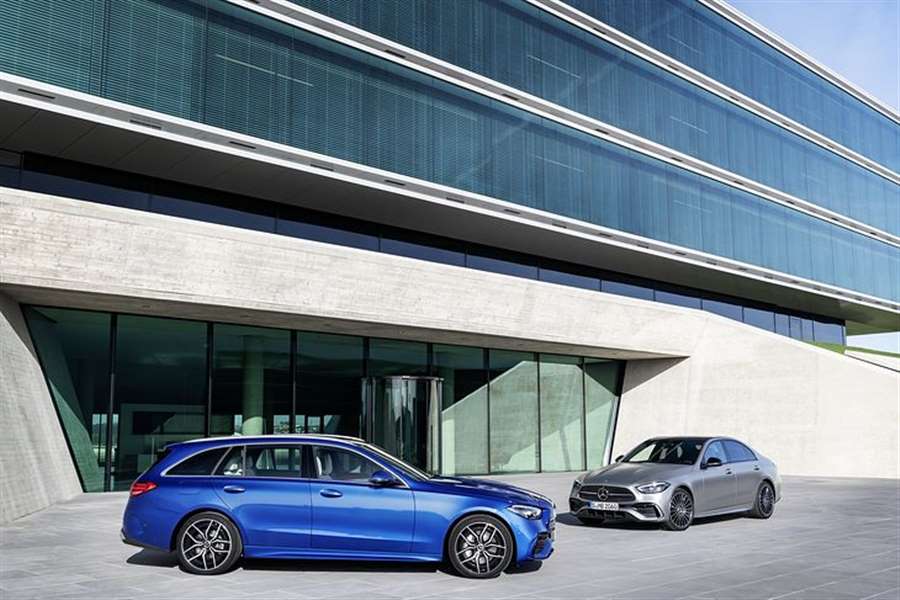
This solution made it possible to reduce the turning radius by 43 cm. It is also the cause of a shortened management ratio. Of course, as an option, an adjustable suspension will also be available that adapts the suspension to current road conditions.
Digital Light headlights seem to be another interesting novelty. You won't guess - we already know them from the S-Class. It is an optional solution that uses 1.3 million micro mirrors to direct the light beam anywhere and to display useful lighting, such as lines or symbols on the road. All this to ensure optimal lighting of the area in front of the vehicle without dazzling other road users.
The equipment can be really rich, far above the standards of the middle class. Massage seats or aroma diffusers in the interior go hand in hand with extensive driver support systems that reduce driver participation in driving even when driving at 210 km / h.
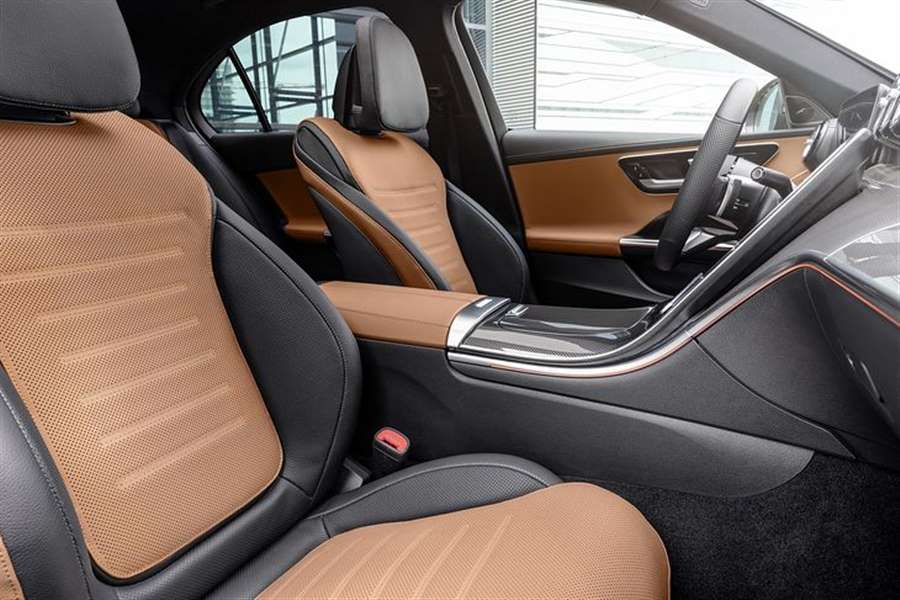
Revolution in operation
This is a change that certainly won’t appeal to everyone. Officially, all engines in the new C-Class have 4 cylinders and a volume of no more than 2 liters. Moreover, each motor is supported by a mild hybrid system that allows it to recover energy, which is then used to temporarily improve performance or power the built-in instruments. Plug-in hybrids are also available.
The role of the basic version of the engine is performed by the petrol C 180 1.5, available in 170 and 204 hp variants. Then we have a two-liter C 300 258 hp and two diesels: a C 220 d 200 hp and a C 300 d 265 hp. A mild hybrid is standard on each of these engines, as is a 9-speed automatic transmission. The C 200 and C 300 versions will also offer the optional 4Matic 4WD drive.
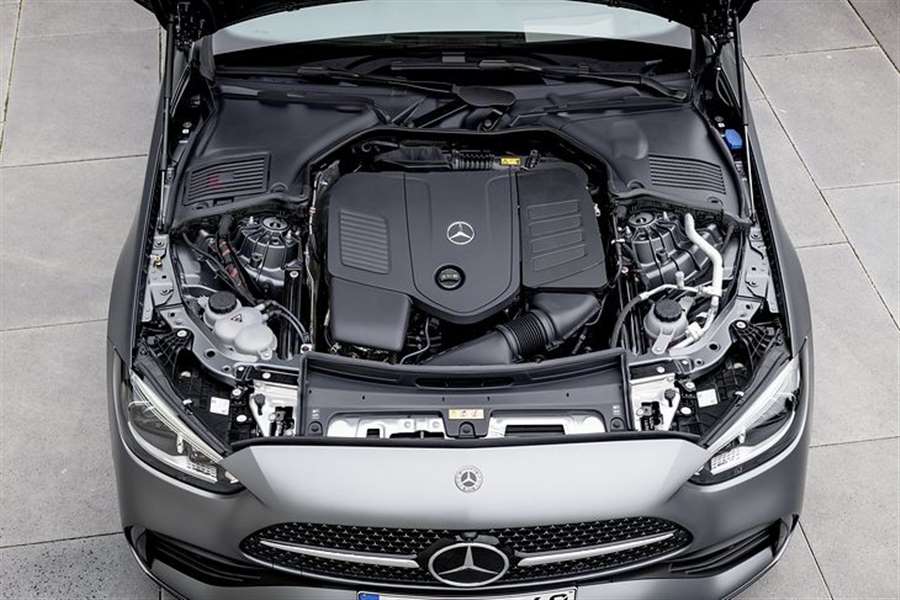
There are also plans for plug-in hybrids based on gasoline and diesel engines. And although Mercedes has yet to boast the specifications of any of these drives, we know what their main attraction will be. We are talking about an additional electric motor that generates a maximum of 129 hp of power and an impressive 440 Nm of maximum torque.
As befits, they will only be able to travel on electricity. Thanks to the 25.4 kWh battery, the maximum range on electricity alone will be up to 100 km. The result is currently unattainable for the vast majority of competitors.
Another advantage is the ability to quickly charge with 55 kW, which allows you to charge the battery in 30 minutes.
Will the risk pay off?
The new C-Class seems to have a number of advantages, and while the decision to abandon large engines may not appeal to everyone, the car should strengthen its position in the premium mid-range. In any case, Volvo is the best example of how "downsizing" bothers commentators on forums more than actual customers.
Will it be the same for Mercedes? We'll find out soon enough. The first copies will be delivered to customers in the summer of 2021.
New Porsche Taycan Cross Turismo prototype review
We get behind the wheel of a prototype version of the new all-electric Porsche Taycan Turbo S Cross Turismo ahead of its official arrival
Porsche’s first foray into the electric car world has gone better than it could’ve imagined. The Taycan has won plaudits the world over, with sales to match. So it makes sense to follow up on the success quickly with the second version of the Taycan, the Cross Turismo.
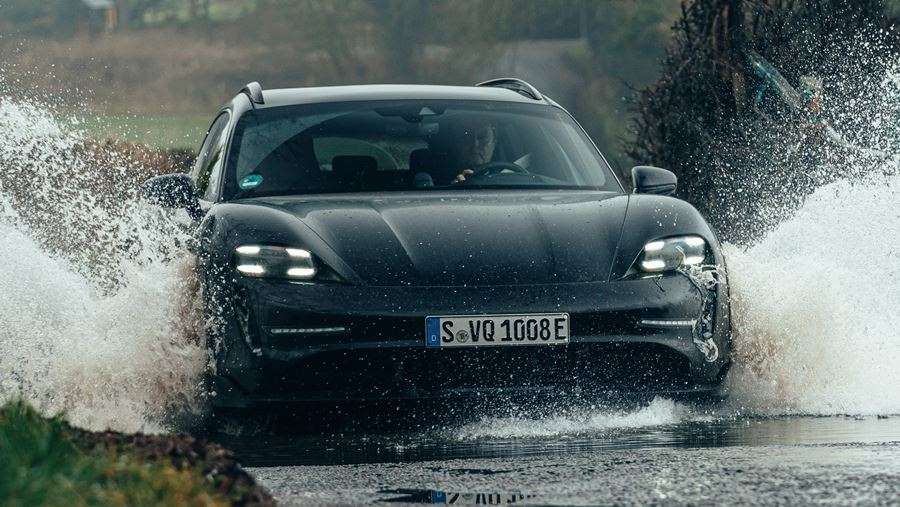
The Porsche Taycan Cross Turismo is set to be unveiled next week, but Auto Express was invited to put a pre-production model through its paces in the UK, weeks before the very car would be unveiled on stage.
There was an added twist to this car – it was in the middle of a world tour taking in the US and the rest of Europe before being taken back to Germany. And although it wore a light disguise, it wasn’t to be cleaned during its trip. So joining the Californian sand was a fair bit of Buckinghamshire mud from our own test drive.
The Cross Turismo features the running gear and much of the bodywork at the front end from the Taycan saloon, but the roof has been extended which, along with the muscular rear three-quarter bodywork, flows into a hatchback tailgate in a very similar way to the Panamera Sport Turismo.
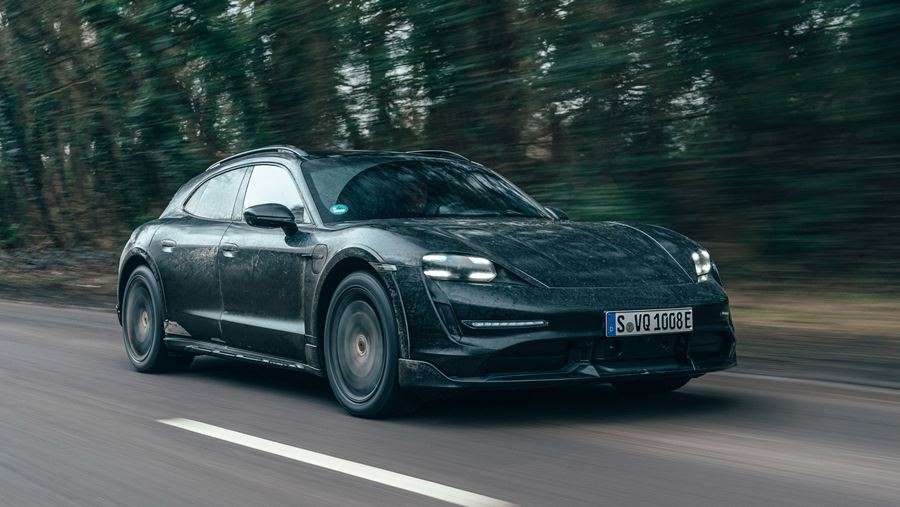
Even behind the dirt and disguise, it’s clear what the car is – as one Panamera Sport Turismo owner spotted on our test drive. He also found out how quick the car is.
Full specs will be revealed on March 4, but the Turbo S model we’re driving uses the same electric motors (delivering 751bhp and 1,050Nm) and 93kWh battery as it’s Taycan equivalent. That means brutal acceleration with an estimated 0-62mph time of just 3.0 seconds, 0-100mph in 6.5 seconds and on to a top speed of around 160mph.
Those figures are slightly down on the saloon, but you’d hardly notice. Even in Normal mode, adjusted by a dial on the steering wheel or via the crystal clear touchscreen, a flex of your right foot will shove you back in your seat as the whine from the electric motors ramps up.
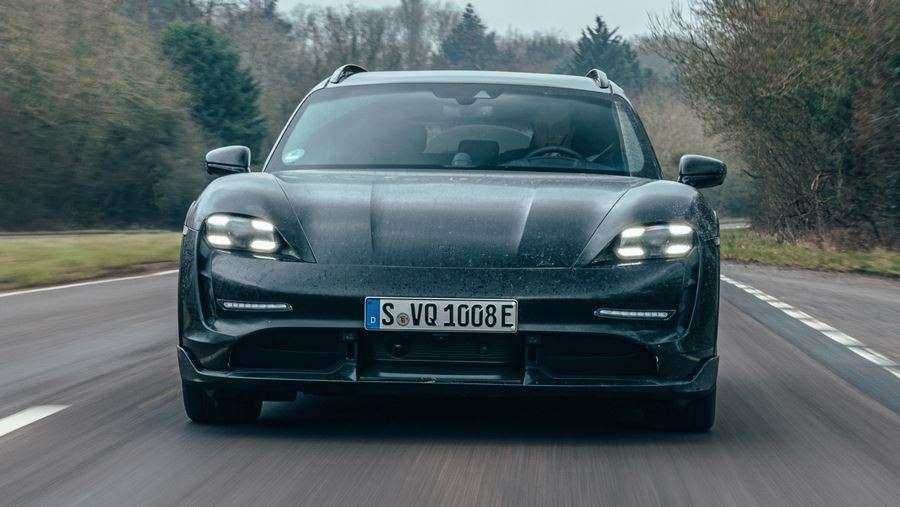
You can choose an electronically generated sound that’s a little like a space ship as part of the Electric Sport Sound pack. It comes on automatically if you select Sport or Sport Plus modes – they also sharpen up responses from the steering, throttle and suspension.
The Cross Turismo has a bit of SUV attitude, too, with Gravel mode, which raises the suspension by 10mm in addition to the 20mm the Cross Turismo gets over the standard Taycan. It doesn’t turn the car into an off-roader, but it does give you a little more confidence to take to a dirt track or tackle a deep ford, as we did.
Four-wheel drive helps, too, but the Taycan has always felt like a proper Porsche to drive; nimble and incredibly responsive for something of its size and weight.

It also rides in a way that we’ve come to expect from Porsche, but which seems to defy physics. Even in the most hardcore modes, you can live with the ride. But for everyday driving in the Normal setting – or Range if you want to try and get close to an expected 250-mile range – it’s almost limo-like, while you’re still able to enjoy the most direct steering yet in an EV and super-tight body control. The best bet is to go for your own blend of settings in Individual mode, but you can throw the car around with confidence and blast out of corners with acceleration that little else can match.
The (fast) limo experience extends to the back where the added ride height makes access a little easier, but it’s best to describe it as snug – more due to the high window line than a lack of space.
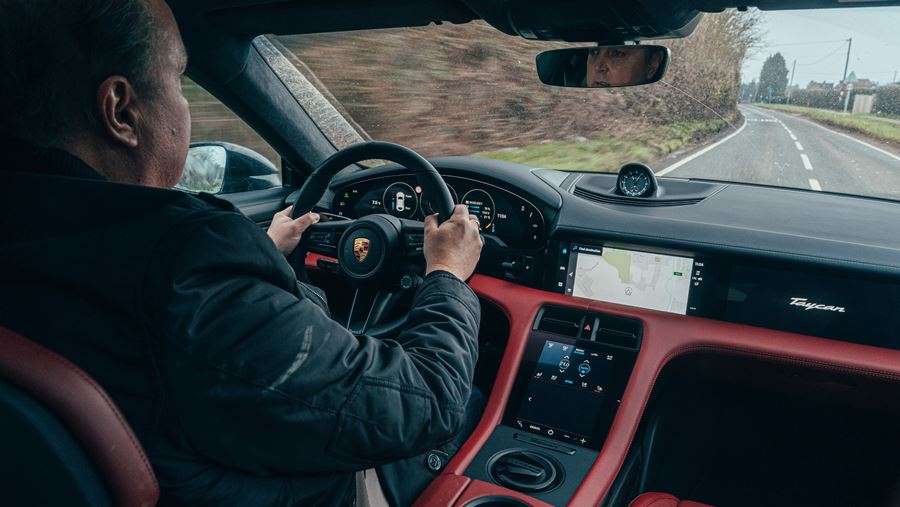
Similarly, style compromises the boot. Again, the hatch improves access, but the sloping rear screen will limit load carrying and won’t endear you to your dog.
Although this was a pre-production model, there was nothing pre-production about the build quality. Porsche cabins are as good as they get these days, with strong tech that includes a digital instrument display, two central touchscreens and even one in front of the passenger. The only rattles from this well-travelled pre-prod model came from grit coming lose from under the car – it felt incredibly solid.
One difference on our pre-production test example was the wheels – you’ll get 21-inches on production cars, ours came on 20s, wisely fitted with all-season tyres.
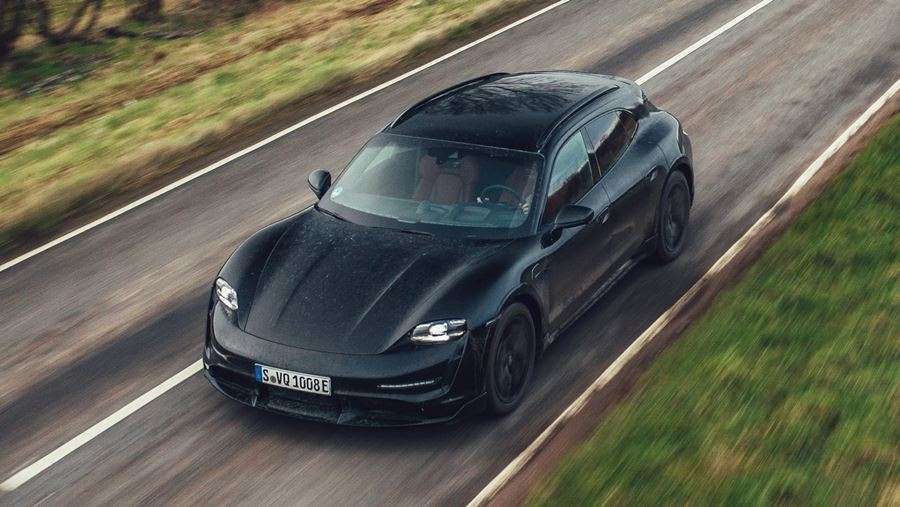
Although the Taycan Cross Turismo gives you plenty more than the saloon, we’re not expecting that to be reflected in the price – we reckon around £140,000 for the range-topping Turbo S – no more than a couple of grand more than its sibling. The rest of the Cross Turismo range should follow the saloon, with the exception that a rear-wheel drive version is not expected.
That won’t bother too many. Our short run in this rather special pre-prod model has proven Porsche will have yet another hit on its hands.
Hyundai IONIQ 5 - World Premiere
Welcome to the world premiere of the Hyundai IONIQ 5. The latest EV that redefines the way of life in electric mobility and allows you to start your own world.
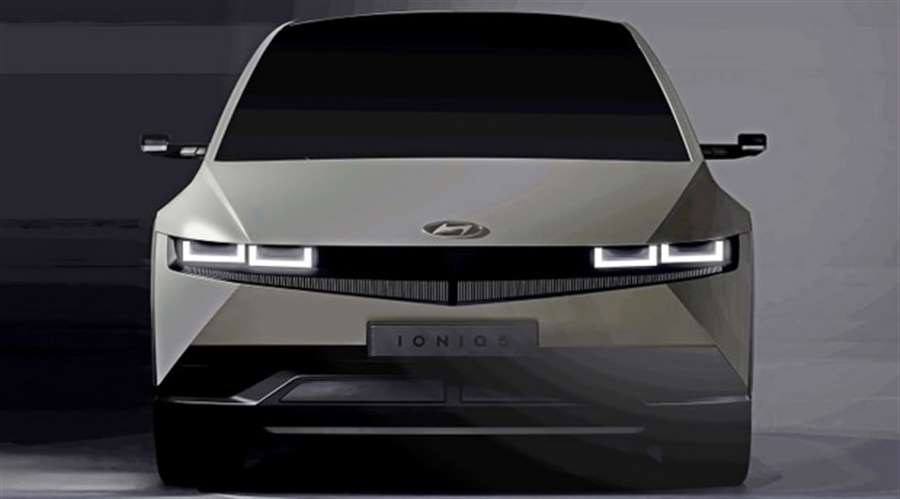
IONIQ 5 satisfies different lifestyles without restrictions in your daily life. EV combines adaptable space and environmentally friendly materials with outstanding technology and design. IONIQ 5 takes us to a better, brighter and more sustainable world.
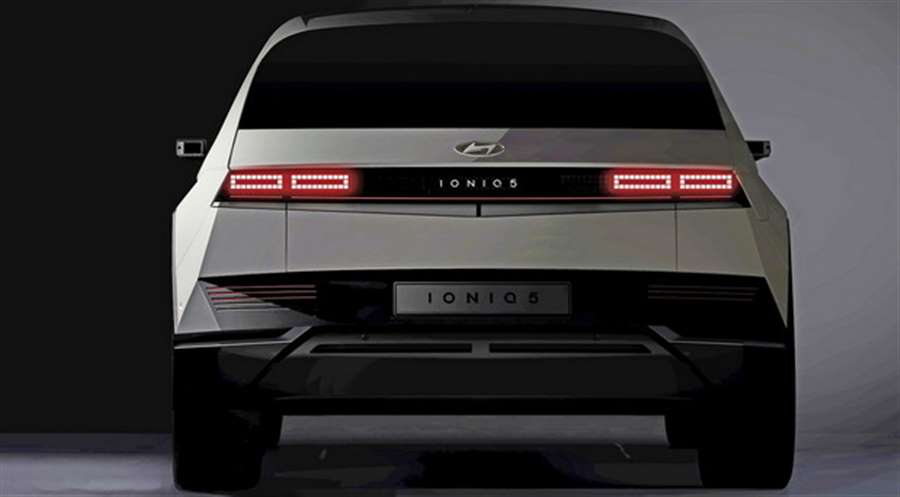
Join us on February 23rd for the world digital premiere of the all-new IONIQ 5.
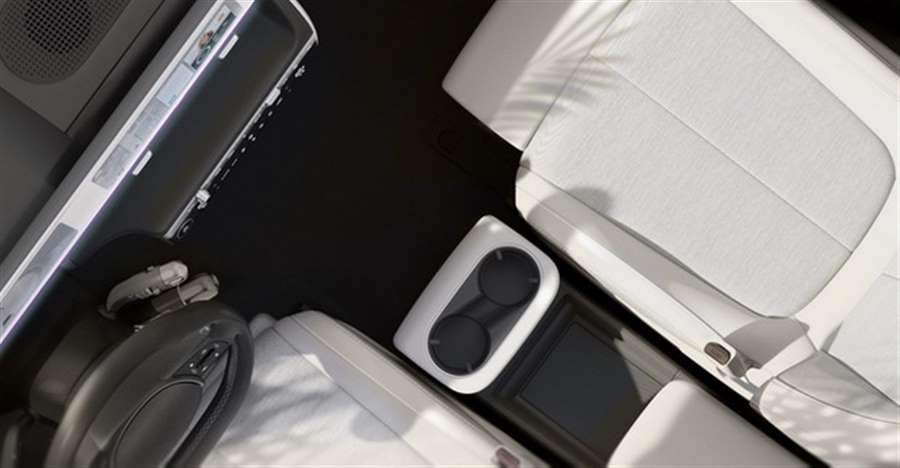
Suzuki Vitara SUV review
“The Suzuki Vitara is a class stalwart and the latest version is affordable to buy and run, as well as being fun to drive”
The Suzuki Vitara is one of the original small SUVs and has a good reputation for reliable, rugged motoring. Suzuki has taken the latest Vitara down the crossover route and while on-road driving has improved, some of its off-road abilities have diminished slightly. It isn’t designed to tackle rough terrain in the same fashion as the Suzuki Jimny but it can still be specified with four-wheel drive.
The Vitara still suits those who are regularly faced by rough roads and adverse weather conditions. It's also priced to offer good value compared to the Nissan Juke, Peugeot 2008, Renault Captur and Toyota C-HR, although the Citroen C3 Aircross, SEAT Arona and Hyundai Kona put up a strong challenge in terms of metal for your money. The Dacia Duster, meanwhile, comfortably undercuts all of the above, even in range-topping trim with four-wheel drive.
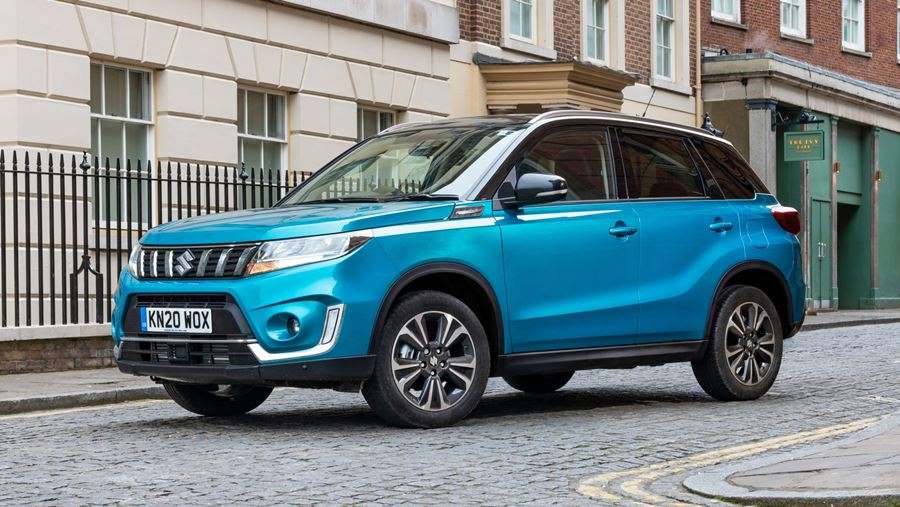
Best small SUVs
A 2018 facelift retained the familiar boxy shape but Suzuki made small changes to the Vitara's exterior to make it look more modern. These included a redesigned front bumper and vertically-slatted front grille, as well as LED rear lights, different alloy wheels and a revised menu of paint colours. There are plenty of straight lines and flat surfaces and it looks rather more traditional than some rivals. A further update in 2020 added LED headlights and 48-volt mild-hybrid electrical assistance.
These simple lines also mean interior space isn’t compromised by swoops and curves, so there’s plenty of room. The Suzuki feels tough, too, with just some cheap-looking plastics inside showing up its competitive pricing. And there’s clearly substance beneath what you can see, with Euro NCAP awarding the Vitara the full five stars for crash safety.
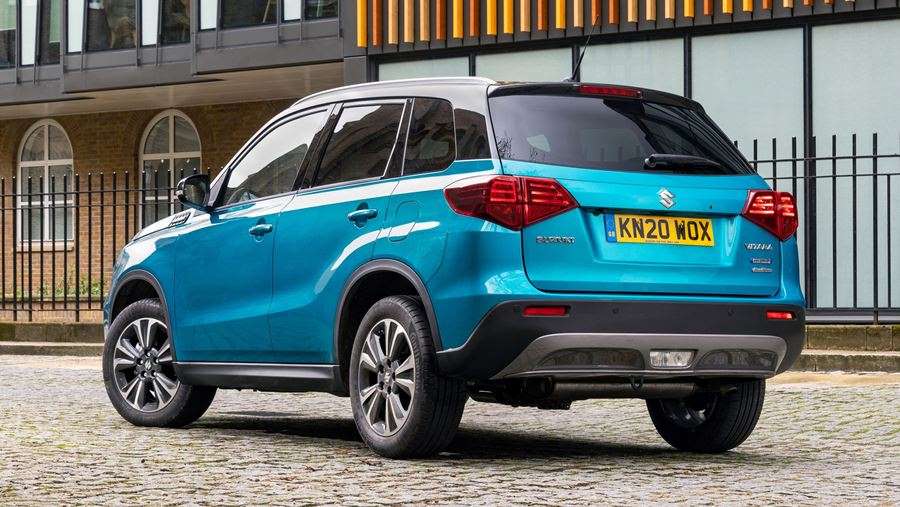
During its life, the Vitara has been offered with several petrol and diesel engines but the 2020 update sees every model come with a 1.4-litre ‘BoosterJet’ petrol. It’s shared with the Suzuki Swift Sport, and now features mild-hybrid technology to boost performance and economy. ALLGRIP four-wheel drive can be chosen but only in conjunction with the plusher SZ-T and SZ5 trim levels.
All cars now get a six-speed manual gearbox as standard, which should be better at cruising than the old five-speed. There’s no automatic version offered at the moment, so if you need one you’ll have to look at a different car.
Unfortunately, the switch to a mild-hybrid powertrain has made the Vitara more expensive, dragging the price up to more than some of its rivals. While some may feel its increased power and economy is worth the extra outlay, a high price tag definitely changes the Vitara for the worse when you consider it as an overall package. With a tall roofline, the Vitara leans a little more in corners than a hatchback or saloon, but grips keenly and can even be fun to drive. Suzuki has even included a ‘Sport’ button, which adds some resistance to the steering and sharpens the throttle response.
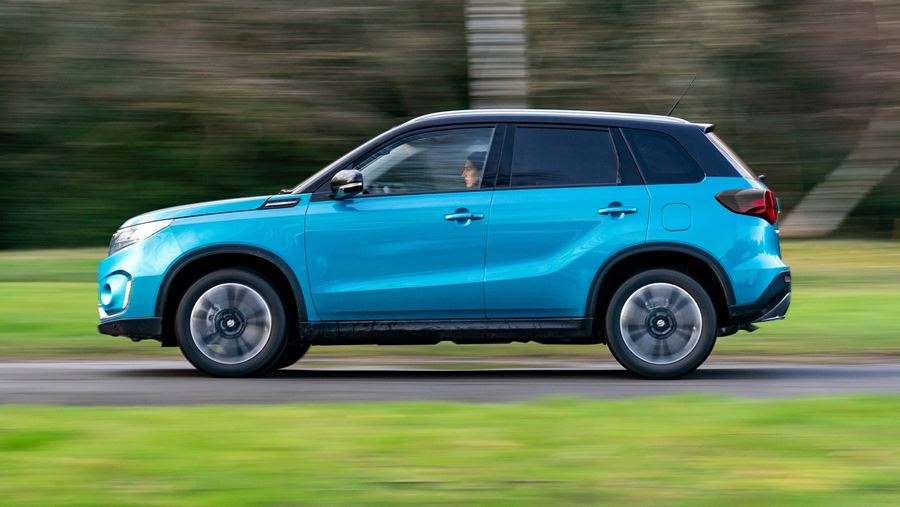
No model is light on equipment, either – even the entry-level SZ4 trim comes with alloy wheels, DAB radio, air-conditioning, adaptive cruise control and Bluetooth to connect your smartphone. Stepping up to SZ-T trim adds sat nav, a reversing camera, Apple CarPlay and Android Auto, rear privacy glass, and special 17-inch alloy wheels, while SZ5 brings parking sensors, keyless entry and start and a panoramic sunroof.
Safety is of course top priority for most families and the Vitara has a five-star crash-test rating from Euro NCAP, thanks to its roster of airbags, anti-lock brakes, electronic stability control, autonomous emergency braking and lane-departure warning. Meanwhile, the Suzuki finished 54th out of the 75 cars ranked in our 2020 Driver Power owner satisfaction survey of cars currently on sale in the UK.
While this Vitara might not be as revolutionary as the original, it does most things very well, and should prove very dependable. If you can live without four-wheel drive, we reckon the mid-range SZ-T is the best value; it’s very well equipped - getting features such as sat nav, a rear parking camera, smartphone connectivity and larger alloy wheels - but only costs around £1,000 more to buy than the entry-level model.
Suzuki Vitara SUV - MPG, running costs & CO2
Fuel economy and other running costs are reasonable
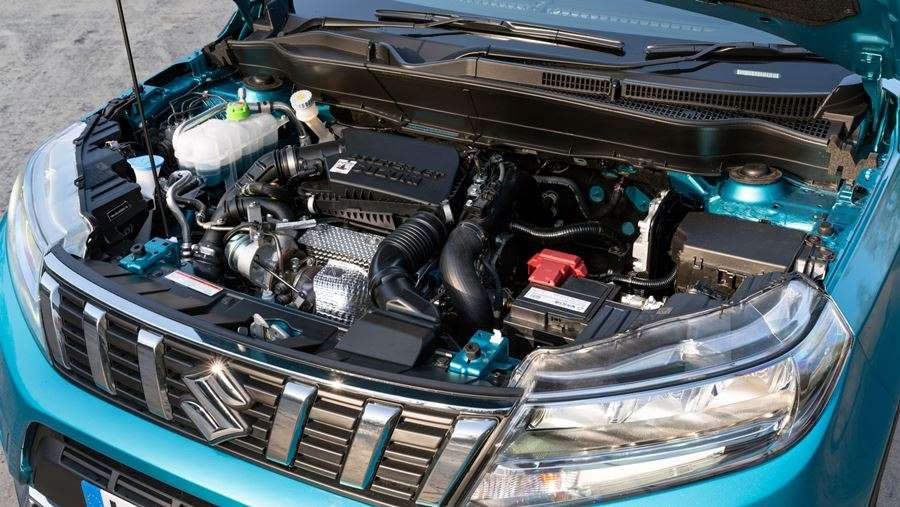
The entry-level SZ4 model has a reasonably competitive starting price but the mild-hybrid technology has pushed prices up by about £1,500 compared to the old non-hybrid car. Forecasts suggest the Vitara won’t keep its value particularly well, which may push up your monthly payments on PCP finance deals.
The Vitara's fuel consumption figures, though, are much better since the electrical assistance was added. It’s now on a par with rivals, so shouldn’t be too expensive to run.
Suzuki Vitara MPG & CO2
All Vitaras are now powered by a 1.4-litre turbocharged petrol engine, which is said to return 49.7mpg in two-wheel drive models. With the new mild-hybrid tech, it returns about 6mpg more than the non-hybrid 1.4-litre engine that was previously offered. CO2 emissions of 128g/km give it an upper Benefit-in-Kind (BiK) rate for company-car drivers.
We wouldn’t recommend going for the four-wheel ALLGRIP drive model unless you really need it because it costs significantly more to buy, adding a premium of around £1,800 to the list price for the SX-T and SZ5 models. It also has an impact on efficiency, reducing fuel economy to around 45mpg while pushing up the CO2 emissions to 140g/km - which places it into a higher BiK banding than the front-wheel drive version.
As every Vitara has mild-hybrid technology, they cost £140 a year to tax, after a CO2-weighted year-one payment that’s included in the on-the-road price.
Insurance group
The Vitara sits in group 21-22 depending on the trim level, and if you spec the ALLGRIP four-wheel drive it’s much more expensive to insure than several small SUV rivals. By comparison, several entry-level versions of the Vitara’s rivals sit in far lower groups, with the Nissan Juke starting in group 11 and the least powerful Renault Captur starting in group eight.
Warranty
As with the rest of its range, Suzuki offers a three-year/60,000-mile warranty on the Vitara. This was once considered the industry standard, but rivals like the Kia Stonic come with a longer cover period as standard.
Servicing
Suzuki says its cars should be serviced once a year or every 9,000 miles – whichever comes first. If you don’t drive many miles, this should mean the same annual trip to the dealership as most rivals, but if you drive a lot, the Vitara could prove more expensive than models with more miles between services. Suzuki offers a range of fixed-cost servicing packages across its cars, so the Vitara should also benefit from this.
Suzuki Vitara SUV - Engines, drive & performance
The Suzuki Vitara range is limited to one engine, but it does feel quite sporty
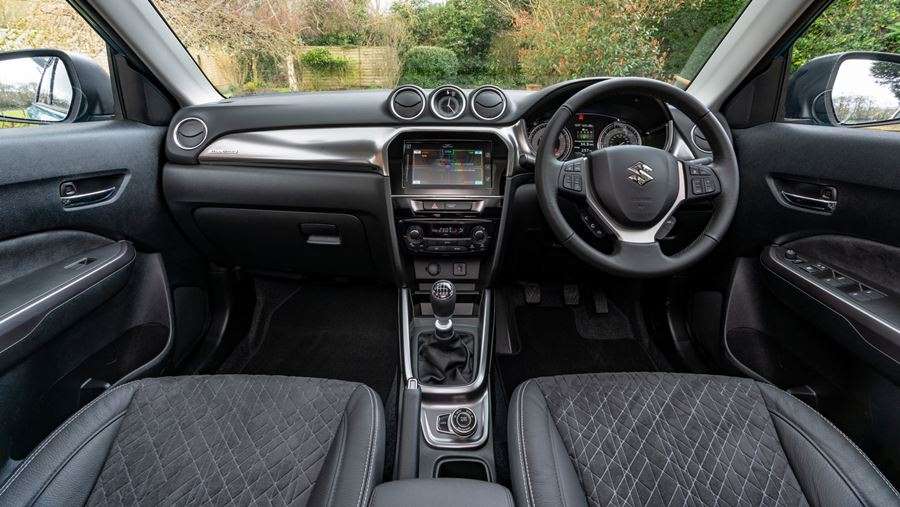
Although the Vitara is one of the least bulky compact SUVs, it's no longer in a field of its own. It leans markedly in corners and rivals such as the Dacia Duster are comfortably a match for the Suzuki when it comes to driving fun. The Peugeot 2008 and SEAT Arona – though SUV-like in appearance – are more removed from the traditional off-roaders of old, offering a more car-like feel.
Driving the Vitara around town doesn't feel like hard work, because the steering is light (if a little artificial-feeling). But as the Vitara is heavier than a city car, it's slower to change direction and leans more in corners than, say, a Suzuki Swift. It holds the road well enough at speed, though.
The four-wheel-drive Vitara offers various transmission settings so you can tweak the car to suit your driving style and the type of road – Auto, Sport, Snow and Lock. Choosing Auto when you're cruising on the motorway puts the car into a fuel-saving permanent two-wheel-drive mode. Other modes help you to get the most out of the four-wheel-drive system.
Suzuki Vitara petrol engines
The 1.4-litre BoosterJet engine develops 127bhp, which is about 20bhp more than the old 1.0-litre engine. It might not sound like much, but it drops the 0-62mph time by two seconds to 9.5 seconds, which is easily competitive with (or better than) many of its rivals. All models get this engine, so there’s no sluggish entry-level version.
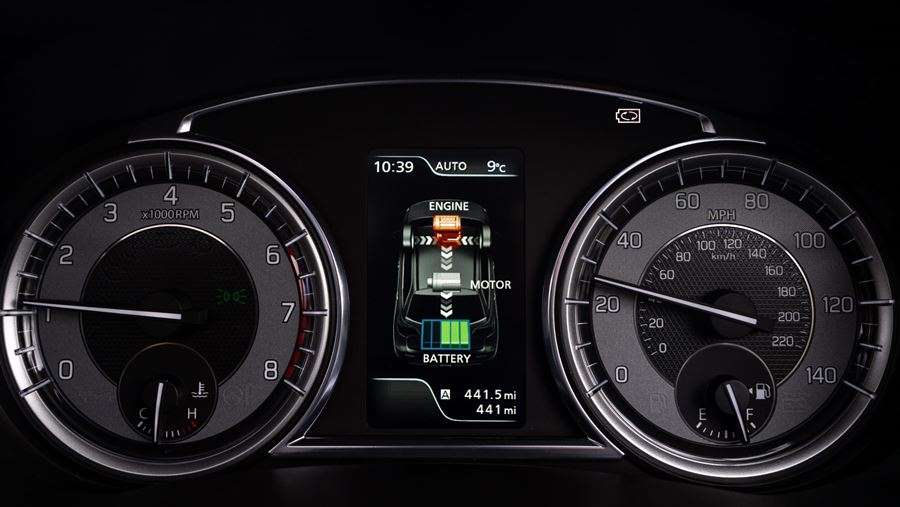
Every version of the Vitara gets mild-hybrid electrical assistance. This consists of a 48-volt battery that’s mounted under the front seat and a belt-driven integrated starter generator, which combine to reduce strain on the engine under acceleration as well as providing extra pulling power when needed. According to Suzuki, the addition of the mild-hybrid system adds around 15kg of additional weight to the Vitara, with no impact on performance.
Its flexible nature means you're not forever having to change gear, which is good news because the Vitara doesn't have the slickest manual gearbox you can buy.
The four-wheel-drive version is a little slower, taking 10.2 seconds to hit 0-62mph. Both front- and four-wheel-drive Vitaras can manage a top speed of 118mph, so cruising at motorway speeds isn’t a problem.
Suzuki Vitara SUV - Interior & comfort
The interior of the new Suzuki Vitara has some neat touches, but some plastics look and feel cheap
The Suzuki is a comfortable car to drive around in, riding well at speed. All models are quiet when you settle into an A-road or motorway cruise and vibrations are kept to a minimum. The ride can be a little fidgety on imperfect roads, though. In the SZ-T model, white stitching on the seats and steering wheel bring some welcome colour and lift the mood of the interior.
Suzuki Vitara dashboard
The recent updates brought only minor changes inside the Vitara. Most prominent are a colour information screen between the dashboard dials, a front centre armrest and the introduction of soft-touch plastics at the top of the dashboard. Despite these tweaks, the Vitara falls some way behind the best European rivals when it comes to interior design.There are some pleasing materials dotted around the cabin in frequent contact points, such as on the door handles, but the majority of plastics are hard and scratchy, which could put some buyers off. It's perhaps not such an issue on the lower-priced models, but a little embarrassing on top-spec versions that run the classy Skoda Kamiq close on price.
From behind the wheel, you’ll find the layout of the dashboard is logical – everything is where you'd expect it to be. The large analogue clock in the middle of the dash is an attractive touch, although this is only standard on SZ5 trim.
The seven-inch touchscreen interface has chunky, bright and clear graphics. However, two translucent menu bars mean the sat-nav map itself is squeezed into a narrow strip in the middle of the screen, which is frustrating. The Vitara also has MirrorLink functionality for smartphone use.
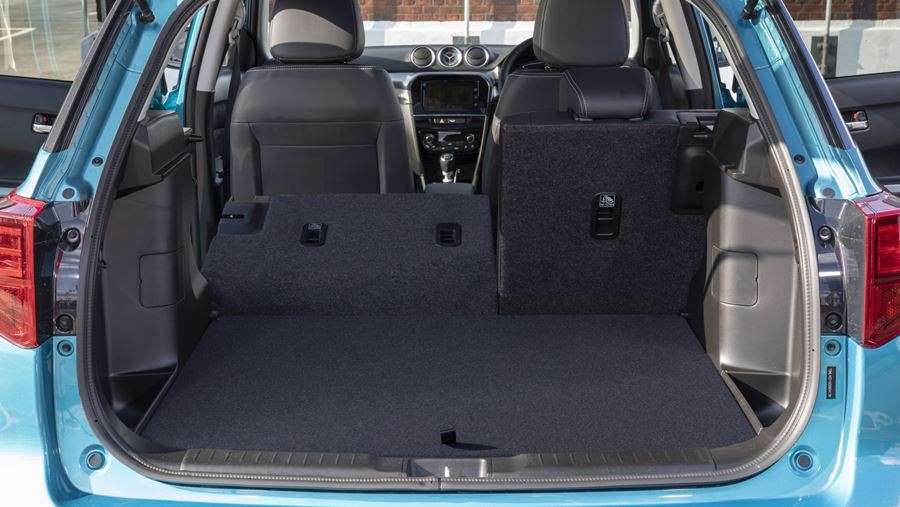
Equipment
There are three trim levels – SZ4, SZ-T and SZ5. Even the entry-level SZ4 has a decent amount of kit, with 16-inch alloy wheels, a CD player, DAB digital radio, adaptive cruise control, automatic air-conditioning, Bluetooth and a USB port all coming as standard.
The mid-range SZ-T trim brings bigger 17-inch alloys, rear privacy glass and the touchscreen - with sat nav, a reversing camera display, Apple CarPlay and Android Auto.
The range-topping SZ5 model gets a panoramic sunroof, front and rear parking sensors, folding mirrors, and keyless entry and start.
Options
Suzuki offers a wide range of paint finishes for the Vitara, including a distinctive metallic orange and a pearl metallic turquoise. Two-tone colour combinations are also on offer (except on the SZ4 trim), some of which might be described as an acquired taste. You can also specify the colour of the front grille, bumper garnishes, instrument-panel trim, air-vent trim and clock.
You can specify a personalisation package, which gets you chrome-plated foglight surrounds, side mouldings and a roof spoiler. The Rugged package gets you front and rear skid plates, foglight surrounds, side mouldings and boot lip protection. These packs are not available on the SZ4 model.
Technology
The Vitara’s infotainment system isn’t the sleekest looking setup, but it’s logically laid out and pretty easy to use. If you go for one of the higher trim levels, the included sat nav features a map display that’s a little on the small side, while the screen reflects sunlight quite badly – although this is compensated for somewhat by the clear and excellent voice guidance.
Get the latest news & reviews
Signup today for regular updates
Enter your email address
Sign up
Speaking of voices, while the Vitara comes with voice control (if you choose a model with sat nav) we found this a bit hit-and-miss when it came to recognising our spoken inputs.
Suzuki Vitara SUV - Practicality & boot space
A well-designed boot helps make the new Suzuki Vitara a very practical family car
The Suzuki Vitara's light doors are easy to open and close. They open to almost 90 degrees, so getting in the car is a breeze. Although the car's seating position is higher than a hatchback's, older drivers shouldn't have any problem getting in.
Finding a good driving position once you’re behind the wheel isn’t a problem, as the wheel adjusts for reach and rake on all models, while the seat adjusts for height.
A high ride height and light steering mean the Vitara is good to drive around town. It's a sizeable car – 40mm longer than the Nissan Juke – so parking could be tricky in a tight spot. Parking sensors are available, but they’re only standard on the highest trim level.
Suzuki Vitara interior space & storage
There's plenty of headroom for all occupants in the Vitara, despite its sporty roofline. Rear legroom is decent, but if you're behind the driver and more than six feet tall, you may find space to be tight.
The doors offer plenty of storage space in their bins, including bottle-holders, but the size of the glovebox is underwhelming. There are two cup-holders up front and the front passenger seat has a pocket on the back, which is handy for holding a road atlas. There are also two ISOFIX child-seat anchor points in the rear.
Boot space
The Vitara's boot has a capacity of 375 litres. Drop the 60:40 split-folding rear seats down and this expands to 1,160 litres. This is pretty much the same size as a family hatchback like the Ford Focus, but many small SUVs offer more luggage space. The Nissan Juke offers 422 litres, while the Renault Captur has sliding seats and offers 422 to 536 litres.
The Suzuki's boot is very well designed, with a wide opening. It's nice and square inside, with no awkwardly shaped protrusions. There are also a couple of useful cubbies either side of the boot.
A removable false floor means you have a bit of space underneath to hide valuable items, plus there's no pronounced boot lip, which makes it as easy as possible to access the loading area. Furthermore, when you fold the rear seats down, they're completely flat, which is a boon when loading large bulky items. The seats fold down easily at the touch of a button.
Suzuki Vitara SUV - Reliability & safety
Early signs point to the new Suzuki Vitara being a safe and fairly reliable family car
The Vitara offers plenty of safety equipment as standard and Suzuki is well known for making fairly tough off-roaders.
Suzuki Vitara reliability
The Vitara feels built to last inside, despite the cheap-feeling plastics used in places. And Suzuki has a very good reputation for building SUVs that are both rugged and long-lasting.
The Suzuki Vitara was rated average for reliability in our 2020 Driver Power owner satisfaction survey, and finished in 54th place out of the top 100 cars currently on sale in the UK. Of the owners who responded, 10.6% reported experiencing a problem with their car at least once in the first year, with the infotainment system causing the majority of issues. Ride quality and fit-and-finish weren’t scored highly for satisfaction either. However, Suzuki owners were happy with running costs, acceleration, handling and rear-seat legroom, and the brand came 17th out of 30 in our Driver Power manufacturer poll.
Safety
The Vitara was crash-tested by the safety experts at Euro NCAP, coming away with a perfect five-star score. It was individually rated at 89% for adult occupant protection, 85% for child occupant protection and 76% for pedestrian protection. Safety assistance was scored at 75%. Key Vitara rivals such as the Nissan Juke, Peugeot 2008 and Renault Captur also all scored five stars.
Most of the Vitara's safety equipment comes as standard on all trim levels – and there's plenty of it. The list includes automatic braking if the car detects a potential collision ahead, cruise control, hill hold (to prevent the car rolling back on hills), seven airbags, ISOFIX child-seat mounting points and electronic stability control (to help prevent skids).
Radar brake support and four-wheel-drive hill-descent control are only available on the top-of-the range SZ5 trim.
Manual vs automatic transmission
Although the automatic transmission has not been so popular in our region in recent years, its popularity is slowly growing. However, have you ever wondered how it works? What is the difference between a manual and an automatic transmission?
The main question that arises is why is a gearbox needed at all? Primarily due to the increase in engine efficiency. If the engine transmitted its power directly to the wheels of the vehicle, its efficiency would be significantly lower. Interesting information is how the engine crankshaft, in some cases, turns as many as four times during a time in which the wheel turns only once. Accordingly, at a speed of 140 km / h and 5,500 engine revolutions, the average size wheel turns only 1300 times.
The automatic transmission consists of the so-called. planetarium (gear). Planetary gears revolve around a "solar" gear, and are located on their carrier, which in practice is located on the axis of the aforementioned sun. Gears depend on stopped gears that can stop the brakes or engage the clutches back (the whole story is simplified). As a rule, the gearshift is done automatically by means of a centrifugal regulator which directs the oil in the gearbox, and it can also be done manually by means of the gear lever.
On the other hand, the manual transmission, which the vast majority of drivers are accustomed to, works on a completely different principle. As a rule, it consists of gears that rotate at a constant speed and gears of different sizes (do not rotate at a constant speed), which give different gear ratios. The gear ratio is defined by the gear ratio and depends on the type of car. For example, in some cars, depending on the gear, it can be 2.8: 1, 1.8: 1, 1: 1, etc.
For all who want to know more about the difference and the principle of operation of automatic or manual transmission, below is a video.
{vembed Y=auQgOtveQi0}
Kia Rio hatchback review
"The Kia Rio is a competent supermini, but because it doesn't excel in any one area, it's difficult to recommend over the competition"
The Kia Rio has matured rather impressively since the first, rather mundane and budget-focused version arrived over a decade ago. While still good value, the updated Rio is now more sensible than penny-pinching, and a worthy competitor in the hard-fought supermini class.
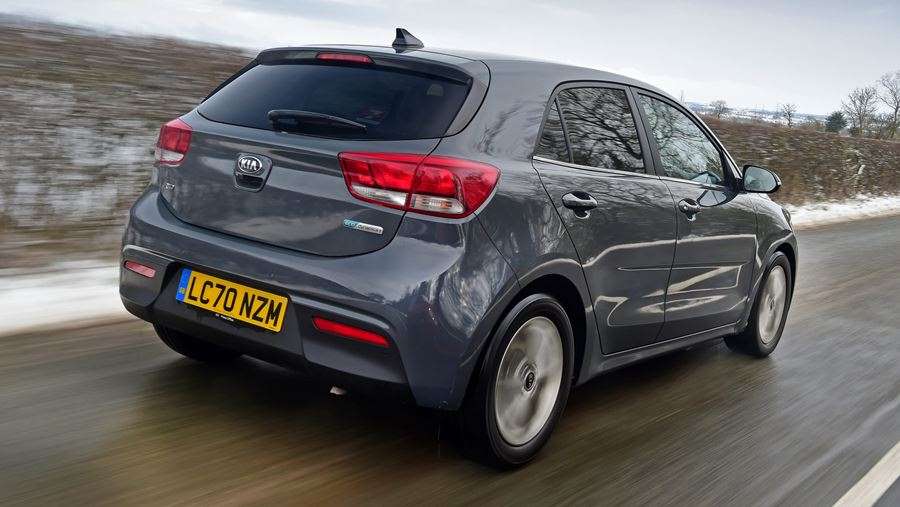
Best reliable small cars
While it may not be as stylish as some, its strengths are practicality, fuel efficiency and generous standard equipment, not to mention the seven-year warranty that makes any Kia a trouble-free ownership proposition. It's a competent all-rounder and deserves to be weighed up against European rivals such as the Ford Fiesta, Renault Clio, Vauxhall Corsa, SEAT Ibiza, Hyundai i10 and Skoda Fabia, as well as the Nissan Micra and Toyota Yaris.
Compared to the Ford and SEAT, the Kia feels pretty average from behind the wheel. Its steering responses are dull and it doesn't feel as poised or agile as the Ford Fiesta, yet it doesn't have the comfortable ride of the Renault Clio, either.
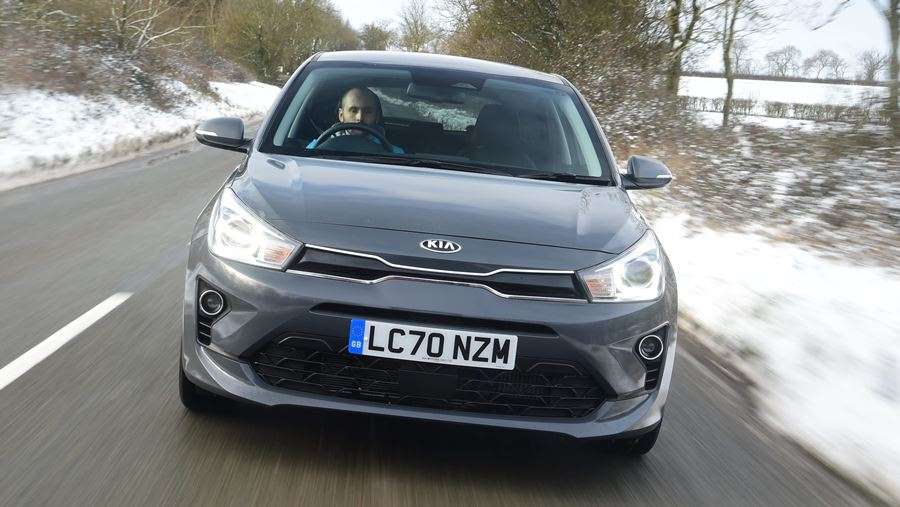
There are three engines to choose from, our favourite of which is a 1.0-litre petrol with either 99 or 118bhp. This is a relatively modern three-cylinder and it's quite peppy – which suits its position near the top of the price list. The range-topper also gets 48-volt mild-hybrid tech and a clever manual gearbox, helping to make its running costs more competitive. The two versions can reach 62mph from rest in 10 and 9.8 seconds respectively, but aren't quite as quiet or smooth as the equivalent rival engines.
There's also the less expensive 83bhp 1.25-litre engine, capable of returning up to 49.6mpg. Meanwhile, for those who still want fuel-efficiency but whose driving is mainly urban, the 99bhp petrol engine still returns up to 52.3mpg.
Further adding to the Rio's common-sense credentials is its spacious interior. It's now available as a five-door only, so access to the front and rear seats is easy and nobody on board is likely to feel claustrophobic. Nor is your luggage likely to complain of being cooped up – there's 325 litres of boot capacity, which is about 10% more than a Fiesta.
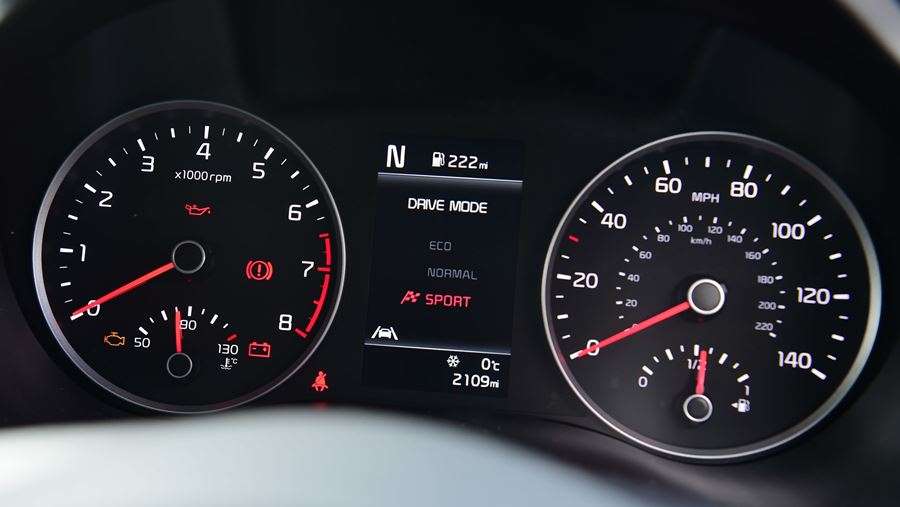
Even the Rio's trim levels are sensibly named, dubbed simply 1, 2, and 3, although the range-topping model is known as GT-Line S. Even the entry-level 1 trim includes air-conditioning, which hasn’t always been standard on the most basic cars in this class, and 2 versions onwards get a new eight-inch touchscreen. It should be noted that you can only choose the most powerful petrol engine in the 3 trim and above. We recommend the mid-range 2 in 99bhp 1.0-litre form as a good all-rounder.
It's clear, then, that while the Rio has plenty going for it, it's no class leader in this tough segment. While many will appreciate its no-nonsense character, it doesn’t really excel in any one area and its rather sedate looks and driving experience mean it won’t be a car you buy with your heart. However, if you're more interested in hassle-free and affordable transportation, there's no ignoring that long warranty, nor the fact that the Kia Rio finished in 23rd place out of the top 75 cars in our 2020 Driver Power owner satisfaction survey.
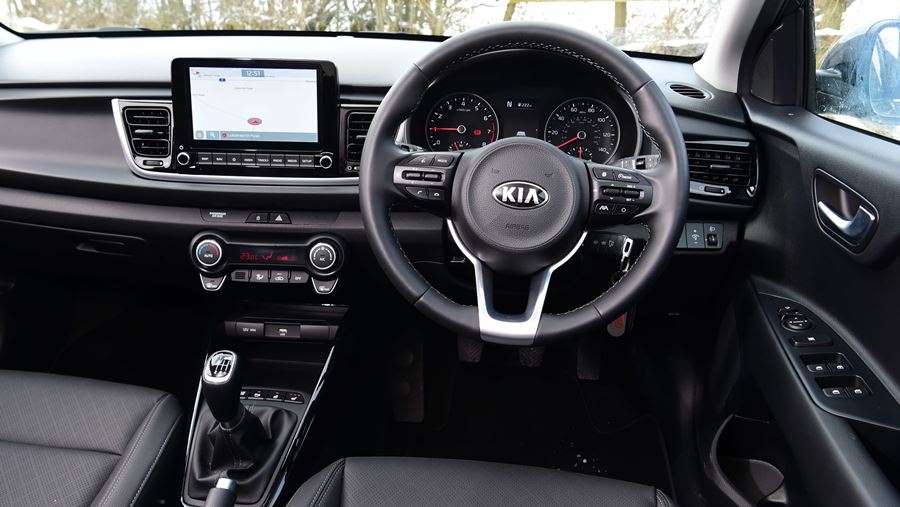
The Kia Rio engine range has been overhauled for the latest model and all of the engines offer decent efficiency. There's no full-hybrid version to rival the Renault Clio E-Tense, Honda Jazz or Toyota Yaris, but the top 1.0-litre petrol engine now gets an innovative gearbox and mild-hybrid setup to help boost efficiency.
Kia Rio MPG & CO2
The most efficient engine is the 1.0-litre turbocharged petrol. With a manual, it can return up to 52.3mpg on the WLTP cycle, and it's both more economical and more powerful than the naturally aspirated 1.2-litre engine. It's the engine we recommend due to its reasonable mix of performance and economy, and it's a good choice for company car drivers too, as it falls into a low Benefit-in-Kind (BiK) band.
The more powerful version of the same 1.0-litre engine is the strongest performer in the line-up, but owing to its small size and mild-hybrid technology, it still manages 52.3mpg and emits 122-126g/km of CO2. A small battery and generator can add torque to help the engine pull away, while an innovative manual gearbox can automatically disconnect drive while coasting to allow the engine to switch off briefly.
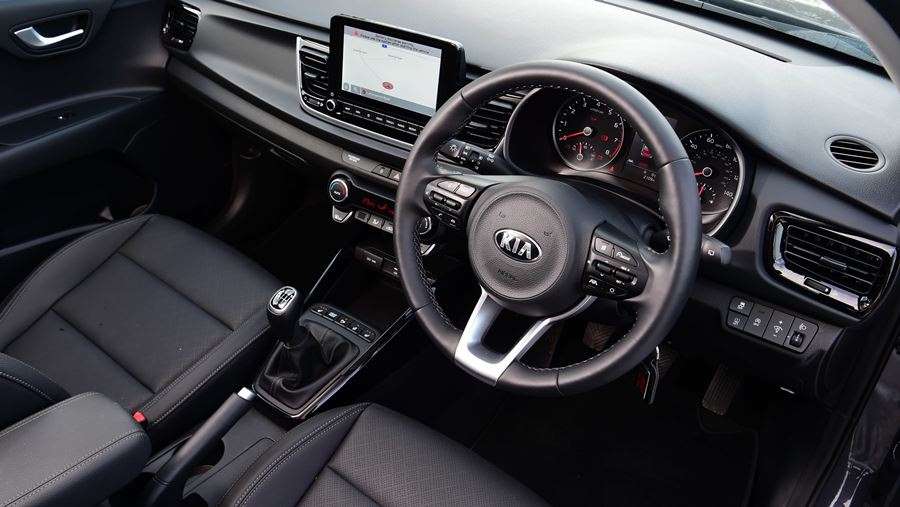
The 83bhp 1.25-litre petrol is the cheapest engine in the Rio range, returning up to 49.6mpg and emitting 130g/km of CO2. In late 2018, Kia ended production of the diesel version of the Rio hatchback. All Rios are liable for road tax of £150 a year.
Insurance group
The Kia Rio occupies insurance groups four to nine (out of 50), with the 83bhp 1.25-litre petrol costing least to insure and the range-topping 118bhp 1.0-litre 3 and GT-Line S trims sitting in group nine.
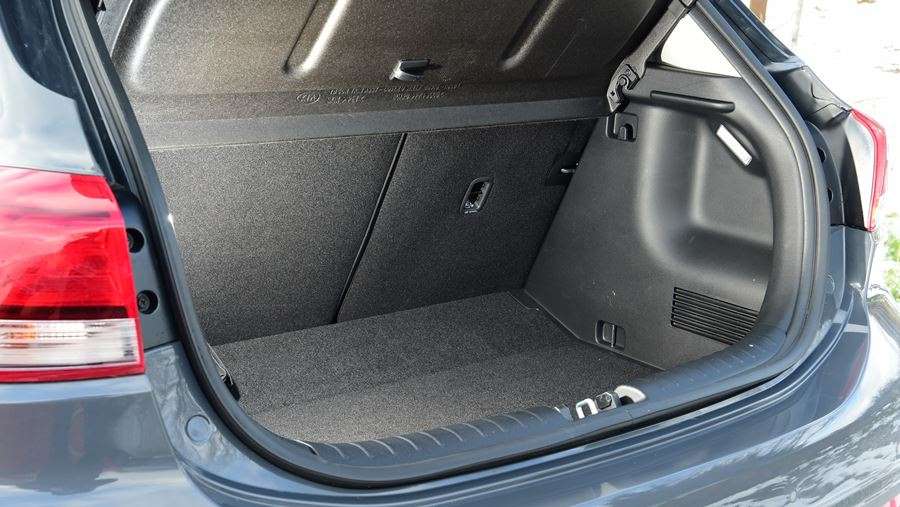
Warranty
One area in which the Rio excels, like all Kias, is warranty cover. Lasting for seven years or 100,000 miles, the brand’s warranty offers fantastic peace of mind and should give owners confidence in the reliability of their cars. It's fully transferable to subsequent owners of the car, too.
Servicing
Kia servicing costs are generally competitive. Petrol models need a service every 10,000 miles or once a year, with diesels needing attention every 20,000 miles or once a year. Kia offers a ‘Care-3’ service pack that costs £299 and covers you for the first three services. For an extra £30, you can get the car’s first MOT included, and for £599 you can cover the cost of the car’s first five services.

